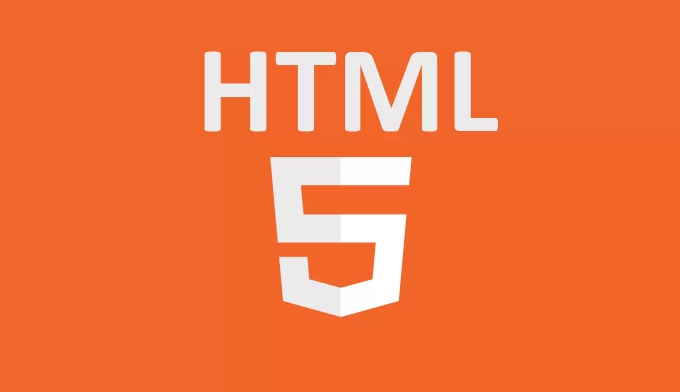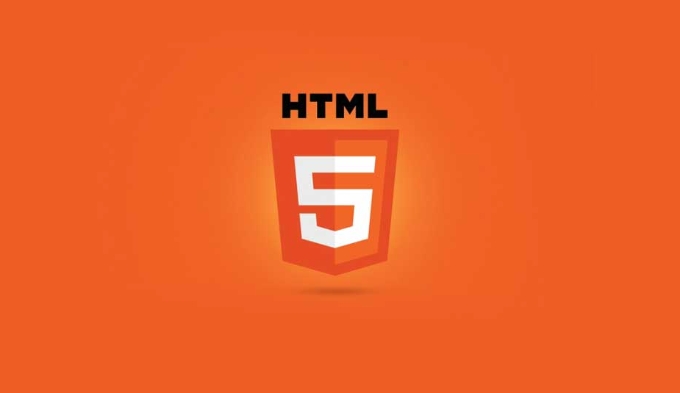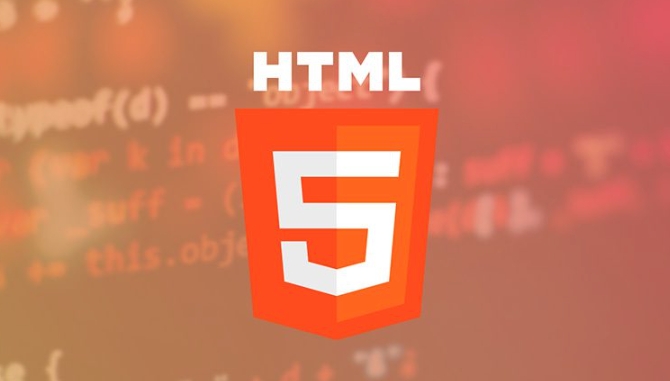There are three ways to embed HTML5 in SVG: inline SVG, img tag references and CSS links. Inline SVG allows style and interaction control, suitable for small icons or dynamic graphics; img tags are simpler but restrict interaction, suitable for independent illustrations; CSS backgrounds are suitable for layout elements but not for dynamic content. SVG can use CSS or JavaScript for style design and animation effects, and need to add ARIA attributes to improve accessibility, such as role="img" and aria-label. When optimizing, use SVGO to clean up redundant data, avoid embedding fonts, and ensure that the viewBox attribute is correct for responsive scaling. Mastering these techniques can help create a flexible and beautiful modern web page.

SVG graphics are a great way to add scalable, high-quality visuals to your HTML5 documents. Unlike raster images like JPEGs or PNGs, SVGs maintain clarity at any size, making them perfect for responsive web design.

Choosing the Right Embedding Method
There are several ways to include SVG in an HTML document, and each has its own use case. The most common methods include embedding the SVG directly using inline SVG code, referencing it as an image with the <img src="/static/imghw/default1.png" data-src="https://img.php.cn/upload/article/000/000/000/175252029534610.jpeg" class="lazy" alt="Integrating SVG graphics into HTML5 documents" > tag, or linking it via CSS.

- Inline SVG gives you full control over styling and animation because the SVG is part of the DOM.
- Using an
<img src="/static/imghw/default1.png" data-src="https://img.php.cn/upload/article/000/000/000/175252029688610.jpeg" class="lazy" alt="Integrating SVG graphics into HTML5 documents" >tag is simpler and keeps your HTML cleaner but limits interaction with the SVG content. - Including SVG through CSS (like setting it as a background) is useful for layout elements but not ideal if you need dynamic behavior.
Pick the method that best suits your project's needs. Inline SVG works well for small icons or interactive graphics, while the <img src="/static/imghw/default1.png" data-src="https://img.php.cn/upload/article/000/000/000/175252029688610.jpeg" class="lazy" alt="Integrating SVG graphics into HTML5 documents" > tag is better for larger standalone illustrations.
Styling and Interacting with SVG
Once embedded, especially inline, SVG elements can be styled just like regular HTML elements using CSS. You can target specific shapes, paths, or groups inside the SVG to apply colors, transitions, or hover effects.

For example:
svg.icon-path {
fill: #333;
transition: fill 0.3s ease;
}
svg.icon-path:hover {
fill: #09f;
}This makes it easy to create interactive buttons or data visualizations that respond to user actions. JavaScript can also manipulate SVG nodes directly, enabling complex animations or dynamic updates based on user input or data changes.
Accessibility Considerations
SVGs, by default, aren't always accessible. If your graphic conveys important information, consider adding ARIA attributes to improve screen reader support. For instance:
<svg role="img" aria-label="Settings icon"> <!-- SVG path data --> </svg>
If the SVG is purely decorative, set aria-hidden="true" to prevent assistive technologies from reading it aloud.
Also, make sure color contrast meets accessibility standards, especially if text or key details rely on color alone to convey meaning.
Optimizing SVG for the Web
Before dropping SVG into your HTML, optimize it to reduce file size and complexity. Tools like SVGO or online optimizers can clean up unnecessary metadata, comments, and redundant points in paths.
Avoid embedding fonts or using effects that don't translate well across browsers. Keep the structure simple, and test how it renders on different devices and platforms.
Also, remember to define a viewBox attribute—it ensures the SVG scales properly regardless of container size.
Basically that's it. SVG is a very practical tool in modern web design. Mastering embedding and optimization techniques can make your site more flexible and beautiful.
The above is the detailed content of Integrating SVG graphics into HTML5 documents. For more information, please follow other related articles on the PHP Chinese website!

Hot AI Tools

Undress AI Tool
Undress images for free

Undresser.AI Undress
AI-powered app for creating realistic nude photos

AI Clothes Remover
Online AI tool for removing clothes from photos.

Clothoff.io
AI clothes remover

Video Face Swap
Swap faces in any video effortlessly with our completely free AI face swap tool!

Hot Article

Hot Tools

Notepad++7.3.1
Easy-to-use and free code editor

SublimeText3 Chinese version
Chinese version, very easy to use

Zend Studio 13.0.1
Powerful PHP integrated development environment

Dreamweaver CS6
Visual web development tools

SublimeText3 Mac version
God-level code editing software (SublimeText3)

Hot Topics
 Audio and Video: HTML5 VS Youtube Embedding
Jun 19, 2025 am 12:51 AM
Audio and Video: HTML5 VS Youtube Embedding
Jun 19, 2025 am 12:51 AM
HTML5isbetterforcontrolandcustomization,whileYouTubeisbetterforeaseandperformance.1)HTML5allowsfortailoreduserexperiencesbutrequiresmanagingcodecsandcompatibility.2)YouTubeofferssimpleembeddingwithoptimizedperformancebutlimitscontroloverappearanceand
 What is the purpose of the input type='range'?
Jun 23, 2025 am 12:17 AM
What is the purpose of the input type='range'?
Jun 23, 2025 am 12:17 AM
inputtype="range" is used to create a slider control, allowing the user to select a value from a predefined range. 1. It is mainly suitable for scenes where values ??need to be selected intuitively, such as adjusting volume, brightness or scoring systems; 2. The basic structure includes min, max and step attributes, which set the minimum value, maximum value and step size respectively; 3. This value can be obtained and used in real time through JavaScript to improve the interactive experience; 4. It is recommended to display the current value and pay attention to accessibility and browser compatibility issues when using it.
 Adding drag and drop functionality using the HTML5 Drag and Drop API.
Jul 05, 2025 am 02:43 AM
Adding drag and drop functionality using the HTML5 Drag and Drop API.
Jul 05, 2025 am 02:43 AM
The way to add drag and drop functionality to a web page is to use HTML5's DragandDrop API, which is natively supported without additional libraries. The specific steps are as follows: 1. Set the element draggable="true" to enable drag; 2. Listen to dragstart, dragover, drop and dragend events; 3. Set data in dragstart, block default behavior in dragover, and handle logic in drop. In addition, element movement can be achieved through appendChild and file upload can be achieved through e.dataTransfer.files. Note: preventDefault must be called
 How can you animate an SVG with CSS?
Jun 30, 2025 am 02:06 AM
How can you animate an SVG with CSS?
Jun 30, 2025 am 02:06 AM
AnimatingSVGwithCSSispossibleusingkeyframesforbasicanimationsandtransitionsforinteractiveeffects.1.Use@keyframestodefineanimationstagesforpropertieslikescale,opacity,andcolor.2.ApplytheanimationtoSVGelementssuchas,,orviaCSSclasses.3.Forhoverorstate-b
 HTML audio and video: Examples
Jun 19, 2025 am 12:54 AM
HTML audio and video: Examples
Jun 19, 2025 am 12:54 AM
Audio and video elements in HTML can improve the dynamics and user experience of web pages. 1. Embed audio files using elements and realize automatic and loop playback of background music through autoplay and loop properties. 2. Use elements to embed video files, set width and height and controls properties, and provide multiple formats to ensure browser compatibility.
 What is WebRTC and what are its main use cases?
Jun 24, 2025 am 12:47 AM
What is WebRTC and what are its main use cases?
Jun 24, 2025 am 12:47 AM
WebRTC is a free, open source technology that supports real-time communication between browsers and devices. It realizes audio and video capture, encoding and point-to-point transmission through built-in API, without plug-ins. Its working principle includes: 1. The browser captures audio and video input; 2. The data is encoded and transmitted directly to another browser through a security protocol; 3. The signaling server assists in the initial connection but does not participate in media transmission; 4. The connection is established to achieve low-latency direct communication. The main application scenarios are: 1. Video conferencing (such as GoogleMeet, Jitsi); 2. Customer service voice/video chat; 3. Online games and collaborative applications; 4. IoT and real-time monitoring. Its advantages are cross-platform compatibility, no download required, default encryption and low latency, suitable for point-to-point communication
 How to create animations on a canvas using requestAnimationFrame()?
Jun 22, 2025 am 12:52 AM
How to create animations on a canvas using requestAnimationFrame()?
Jun 22, 2025 am 12:52 AM
The key to using requestAnimationFrame() to achieve smooth animation on HTMLCanvas is to understand its operating mechanism and cooperate with Canvas' drawing process. 1. requestAnimationFrame() is an API designed for animation by the browser. It can be synchronized with the screen refresh rate, avoid lag or tear, and is more efficient than setTimeout or setInterval; 2. The animation infrastructure includes preparing canvas elements, obtaining context, and defining the main loop function animate(), where the canvas is cleared and the next frame is requested for continuous redrawing; 3. To achieve dynamic effects, state variables, such as the coordinates of small balls, are updated in each frame, thereby forming
 How to check if a browser can play a specific video format?
Jun 28, 2025 am 02:06 AM
How to check if a browser can play a specific video format?
Jun 28, 2025 am 02:06 AM
To confirm whether the browser can play a specific video format, you can follow the following steps: 1. Check the browser's official documents or CanIuse website to understand the supported formats, such as Chrome supports MP4, WebM, etc., Safari mainly supports MP4; 2. Use HTML5 tag local test to load the video file to see if it can play normally; 3. Upload files with online tools such as VideoJSTechInsights or BrowserStackLive for cross-platform detection. When testing, you need to pay attention to the impact of the encoded version, and you cannot rely solely on the file suffix name to judge compatibility.






